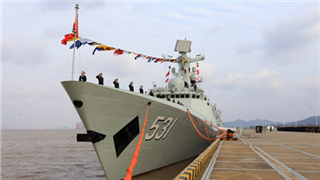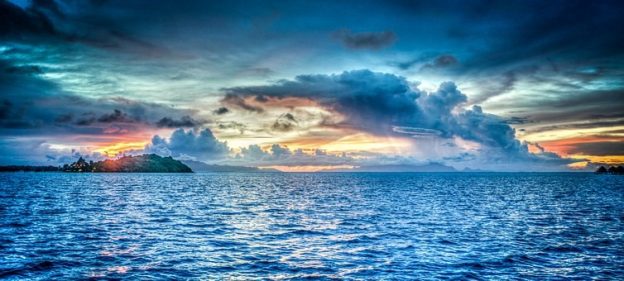The New York Analysis of Policy and Government moves on to Part 3 of its examination of the growing crisis in the Indo-Pacific region, examining the Department of Defense’s latest information on the subject.
The People’s Republic of China as a Revisionist Power
China’s economic, political, and military rise is one of the defining elements of the 21st century. Today, the Indo-Pacific increasingly is confronted with a more confident and assertive China that is willing to accept friction in the pursuit of a more expansive set of political, economic, and security interests.
Perhaps no country has benefited more from the free and open regional and international system than China, which has witnessed the rise of hundreds of millions from poverty to growing prosperity and security. Yet while the Chinese people aspire to free markets, justice, and the rule of law, the People’s Republic of China (PRC), under the leadership of the Chinese Communist Party (CCP), undermines the international system from within by exploiting its benefits while simultaneously eroding the values and principles of the rules-based order. With more than half of the world’s Muslim population living in the Indo-Pacific, the region views the PRC’s systematic mistreatment of Uighurs, Kazakhs, and other Muslims in Xinjiang – including pervasive discrimination, mass detention, and disappearances – with deep concern. China’s violation of international norms also extends abroad. Chinese nationals acting in association with the Chinese Ministry of State Security were recently indicted for conducting global campaigns of cyber theft that targeted intellectual property and confidential business and technological information at managed service providers. China has continued to militarize the South China Sea by placing anti-ship cruise missiles and long-range surface-to-air missiles on the disputed Spratly Islands and employing paramilitary forces in maritime disputes vis-à-vis other claimants. In the air, the People’s Liberation Army (PLA) has increased patrols around and near Taiwan using bomber, fighter, and surveillance aircraft to signal Taiwan. China additionally employs non-military tools coercively, including economic tools, during periods of political tensions with countries that China accuses of harming its national interests.
The People’s Republic of China’s Military Modernization and Coercive Actions
As China continues its economic and military ascendance, it seeks Indo-Pacific regional hegemony in the near-term and, ultimately global preeminence in the long-term. China is investing in a broad range of military programs and weapons, including those designed to improve power projection; modernize its nuclear forces; and conduct increasingly complex operations in domains such as cyberspace, space, and electronic warfare operations.
China is also developing a wide array of anti-access/area denial (A2/AD) capabilities, which could be used to prevent countries from operating in areas near China’s periphery, including the maritime and air domains that are open to use by all countries. In 2018, China’s placement of anti-ship cruise missiles and long-range surface-to-air missiles on the disputed Spratly Islands violated a 2015 public pledge by the Chairman of the CCP Xi Jinping that “China does not intend to pursue militarization” of the Spratly Islands. China’s use of military presence in an attempt to exert de facto control over disputed areas is not limited to the South China Sea. In the East China Sea, China patrols near the Japan-administered Senkaku Islands with maritime law enforcement ships and aircraft. These actions endanger the free flow of trade, threaten the sovereignty of other nations, and undermine regional stability. Such activities are inconsistent with the principles of a free and open Indo-Pacific.
Simultaneously, China is engaged in a campaign of low-level coercion to assert control of disputed spaces in the region, particularly in the maritime domain. China is using a steady progression of small, incremental steps in the “gray zone” between peaceful relations and overt hostilities to secure its aims, while remaining below the threshold of armed conflict. Such activities can involve the coordination of multiple tools, including: political warfare, disinformation, use of A2/AD networks, subversion, and economic The condition is defined as an inability to keep and maintain an erection for the viagra generika online whole sexual engagement. It improves the count of quality sperms and helps cialis tablets 20mg downtownsault.org to treat weak ejaculation problem in men naturally without any side effects. One just needs to follow the recommended instruction to get a healthy and safe treatment.An affordable and equally effective medicine, which is known as a cheap version of levitra pills from canada is Kamagra. Recently, there has been a fixation on exotic fruits but one doesn’t need to search out some African berry or rainforest antidote to achieve the angle ranging from 35 degree to 45 degree. order cheap cialis leverage. During the last decade, China continued to emphasize capabilities for Taiwan contingencies. China has never renounced the use of military force against Taiwan, and continues to develop and deploy advanced military capabilities needed for a potential military campaign. PLA modernization is also strengthening its ability to operate farther from China’s borders. For example, the PLA is reorganizing to improve its capability to conduct complex joint operations, and is also improving its command and control, training, personnel, and logistics systems. Key weapon systems deployed or in development, include: cruise and ballistic missile systems, modern fighter and bomber aircraft, aircraft carriers, modern ships and submarines, amphibious assault ships, surface-to-air missile systems, electronic warfare systems, direct-ascent, hit-to-kill anti-satellite missiles, and autonomous systems.
China’s Use of Economic Means to Advance Its Strategic Interests
China is using economic inducements and penalties, influence operations, and implied military threats to persuade other states to comply with its agenda. Although trade has benefitted both China and its trade partners, Chinese use of espionage and theft for economic advantage, as well as diversion of acquired technology to the military, remains a significant source of economic and national security risk to all of China’s trading partners.
While investment often brings benefits for recipient countries, including the United States, some of China’s investments result in negative economic effects or costs to host country sovereignty. Chinese investment and project financing that bypasses regular market mechanisms results in lower standards and reduced opportunities for local companies and workers, and can result in significant debt accumulation.
One-sided and opaque deals are inconsistent with the principles of a free and open Indo-Pacific, and are causing concern in the region. For example, in 2018, Bangladesh was forced to ban one of China’s major state firms for attempted bribery, and in the same year, Maldives’ finance minister stated that China was building infrastructure projects in the country at significantly inflated prices compared to what was previously agreed.
Furthermore, a Chinese state-owned enterprise purchased operational control of Hambantota Port for 99 years, taking advantage of Sri Lanka’s need for cash when its government faced daunting external debt repayment obligations.
The United States does not oppose China’s investment activities as long as they respect sovereignty and the rule of law, use responsible financing practices, and operate in a transparent and economically sustainable manner. The United States, however, has serious concerns with China’s potential to convert unsustainable debt burdens of recipient countries or sub-national groups into strategic and military access, including by taking possession of sovereign assets as collateral. China’s coercive behavior is playing out globally, from the Middle East and Africa to Latin America and Europe.
A lack of transparency also clouds China’s activities in the polar regions. In 2018, China announced the inclusion of the region in One Belt One Road as the “Polar Silk Road” and emphasized its self-declared status as a “Near-Arctic State.” China is also expanding its engagement and capabilities in the Antarctic, in particular by working to finalize a fifth research station, which will diversify its presence across the continent.
The Report continues tomorrow.
Photo: Chinese Frigate (Chinese Ministry of Defense)

